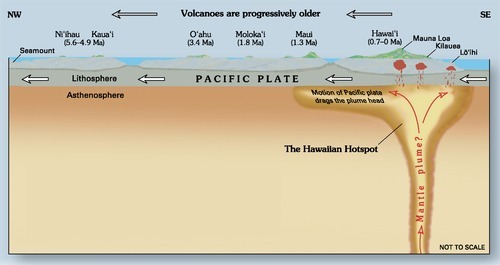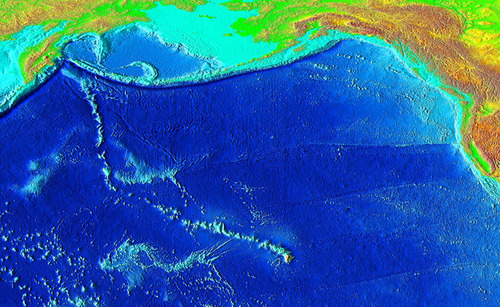sciencesoup: What’s up with all those giant volcanoes on…

What’s up with all those giant volcanoes on Mars?
Mount Everest is an enormous and awe-inspiring sight, towering 9 kilometres above the Earth’s surface. But if you were to stick it on Mars right next to Olympus Mons, the largest volcano in the solar system, it would look foolishly small—Olympus Mons triples the height of Everest and spans the state of Arizona.
Mars is sprinkled with huge volcanoes, hundreds of kilometres in diameter and dozens of kilometres tall. The largest volcano on Earth, on the other hand, is Mauna Loa in Hawaii, which rises only 4 km above sea level.
So why is Mars blessed with these monsters of the solar system? Why doesn’t Earth have any massive lava-spewing structures?
Geology, my friends.
Earth’s crust is split up into plates that move and collide. Usually, volcanoes are formed at the boundaries where two plates meet, and one subducts below the other and melts in the heat below the surface. This melt rises as magma and causes volcanism.
But in some places on Earth, there are “hot spots” in the middle of plates, where magma rises up from the core-mantle mantle in plumes. When this magma is spewed up onto the surface, it cools and solidifies into rock, and over the years, the rock builds up and up. When plumes open out in the middle of the ocean, the magma builds islands.
Plumes are fixed, always pushing magma up to one spot, but the Earth’s plates don’t stop for anything. While the magma rises, the plates move over the hotspot—at a rate of only a few centimetres a year, but still, they move and take the newly-made volcanoes with them. So, gradually, the plates and volcanoes move on, while the plume remains in the same spot, building a whole new volcano on the next bit of the plate. As the plate moves on and on, the plume builds up a whole chain of islands, called island arcs. This is how the Hawaiian Islands were formed.
The island-volcanoes never get too big, because the plates keep moving onwards. On Mars, however, the volcanoes are enormous because the magma appears to keep rising, cooling and solidifying in the same place, taking its sweet time to build up colossal mounds of volcanic rock kilometres high.
So far, we’ve seen no volcanic arcs like we do on Earth, and this is generally taken as evidence that Mars has no tectonic plates.
Reposted from http://lies.tumblr.com/post/101194178142.


